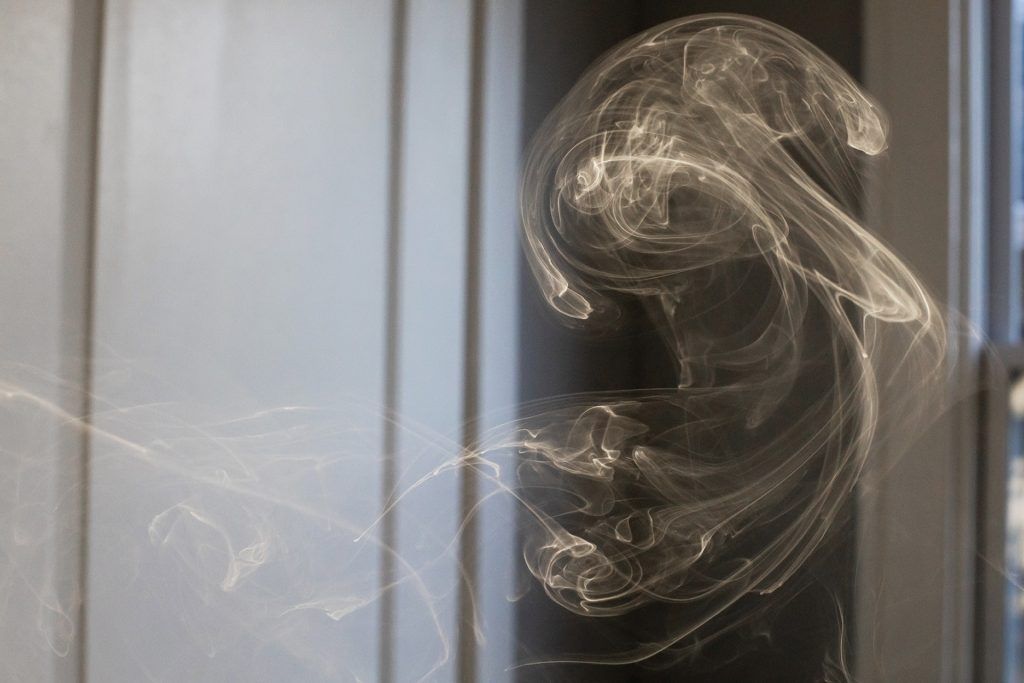Chronic obstructive pulmonary disease (COPD) is the third most common cause of death in the world[1]. Only ischemic heart disease and stroke are associated with higher mortality rates. According to the health statistics of the World Health Organization (WHO), in 2019, chronic obstructive disease took the lives of over 3 million people worldwide. Patients dealing with this chronic disease slowly lose their breath, fitness and independence. This is associated with anxiety and depression, which lowers quality of their life and further increases mortality. Patients require therapy to alleviate the effects of the disease in a physical and, what is equally important, mental dimension. The rehabilitation of COPD patients can be effectively supported by the VR TierOne medical device.
A common and incurable disease
It is estimated that around 251 million people worldwide suffer from COPD.
The knowledge of the term COPD still remains scarce, but its development – chronic obstructive pulmonary disease – carries a large amount of information. We know that it affects the lungs and is long-lasting. The term obstructive indicates the obstruction of the flow of air through the respiratory tract, e.g. caused by their narrowing or other obstruction. What is responsible for the airflow restriction in COPD are the pathological lesions characteristic of chronic bronchitis and emphysema. In COPD, on the one hand, there is an overproduction of mucus and the difficulty of removing it, accompanied by the destruction of the alveoli. Accumulated mucus constricts the lumen of the airways, and the damaged alveoli prevent the lungs from working correctly. These two ongoing processes make up the COPD interfering with gas exchange. Ventilation is difficult and it is easier for the patient to inhale than exhale because damaged alveoli can contain a large amount of air that cannot be removed naturally. COPD obstruction is not completely reversible. Any damage that has already occurred cannot be undone. There is no cure that can eliminate the disease, so what we are dealing with is an incurable disease. This does not sound optimistic, but it does not mean that we cannot slow down the course of the disease, reduce bothersome symptoms and improve the quality of life of patients.
Don’t let your health go away with smoke
Smoking is responsible for 80-90% of COPD cases.
Surely you’ve heard about the dangers of smoking. If you smoke and the campaigns to encourage you to quit smoking have not yet convinced you to do so, it may be the bothersome COPD symptoms that you would not want to experience. Cigarette smoke is the main cause of the disease. So don’t let your health vanish in the smoke and quit smoking! Other causative factors contributing to the development of chronic obstructive pulmonary disease include: previous severe respiratory infections and childhood asthma, polluted air, dust, vapours, and chemicals. The disease may also have an occupational background. Harmful factors in the work environment include dust (coal, cotton, cereal, free silica), which, if inhaled, can lead to COPD. Extremely rarely, the chronic obstructive pulmonary disease may also result from the genetic deficiency of alpha-1 antitrypsin, an enzyme produced by the liver. Smoking, combined with having such a genetic defect, causes the onset of respiratory problems before the age of 40. COPD develops gradually and is often the result of a combination of risk factors. Over the years, the disease does not cause disturbing symptoms, making us unaware of its progress and diagnosed late, usually in the 6th decade of life. When breathing difficulties begin, making us visit a physician, the disease is already advanced and the lungs lack breathing reserves.

Living at half throttle
A person with COPD loses respiratory reserves three times faster than a healthy person.
In response to harmful factors, excessive inflammatory reactions occur in the lungs and bronchi, and, consequently, their function is lost. Loss of active pulmonary parenchyma, structural changes – loss of elasticity within the airways cause the patient to observe:
- shortness of breath with just a little effort, sometimes also at rest,
- breathing difficulties,
- cough,
- coughing up sputum,
- fatigue.
Initially, smoking patients consider these symptoms to be a normal consequence of smoking or aging, and they fail to report them to their physician. Worse respiratory efficiency translates into exercise intolerance. Fearing the occurrence of dyspnea, patients avoid excessive activity, give up their interests and stop living their life to the fullest. COPD is not only a respiratory disease, it is also a systemic disease. Apart from the symptoms mentioned by the patient, there are also other signs, which include:
- changes is auscultation: wheezing, whirring, lowered alveolar respiratory noise,
- inspiratory chest position – barrel-shaped chest,
- a characteristic way of breathing: exhaling through “laced” mouth,
- hammer toes,
- drawing the intercostal space while inhaling,
- cyanosis.
What also occurs in the course of the disease are weight loss, loss of muscle strength and hypoxia. Based on the clinical image, there is a high degree of probability that COPD can be suspected, but the gold standard in diagnosing and monitoring the disease is the simple and painless spirometry. The result of the spirometry allows us to confirm the suspicion of chronic obstructive pulmonary disease and helps to determine the degree of its advancement, which facilitates therapeutic decisions.
Prophylaxis of COPD exacerbations
The winter season is the time of the most common COPD exacerbations.
The disease is susceptible to prevention and treatment against exacerbations. Each exacerbation of COPD is associated with a decrease in lung function and the associated decrease in quality of life. Treatment of chronic obstructive pulmonary disease is associated with the use of pharmacotherapy, including bronchodilators and corticosteroids; and oxygen therapy, which involves the use of oxygen delivering devices. Apart from taking their medications, the patients must also be careful about factors that might exacerbate the course of the disease. They should avoid exposure to tobacco smoke, contaminated, frosty or too humid air. It is also necessary to minimize the risk of viral respiratory infections. Diseases caused by respiratory viruses may be more severe in patients with COPD. Therefore, according to WHO recommendations, patients should be vaccinated against pneumonia, flu and the coronavirus.

Counteracting anxiety and depression
Anxiety occurs in 21-96% and depression in 27-79% of COPD patients[2].
The negative psychological symptoms accompanying COPD may stem from the very diagnosis of an incurable disease. One becoming seriously ill may feel hopeless. Facing a progressive ailment and declining performance can constitute depressant factors. Having to quit smoking and modifying your lifestyle can also be a burden in psychological dimension. The chronic nature of the disease is a source of stress and excessive anxiety and depression, which are often diagnosed in COPD. Anxiety and depressive disorders have a negative impact on the treatment of any disease with which they coexist. Patients with symptoms of depression are less willing to cooperate less, which further deteriorates their health. In patients with COPD, anxiety increases the feeling of breathlessness, which contributes to the development of anxiety. Counteracting the anxiety response is important in preventing disease exacerbations, hospitalization required due to them, and respiratory disability. Hospital stays and attacks of breathlessness constitute an understandable source of stress. Coughing fits can become a source of shame and isolation. Therefore, also for the sake of mental well-being, it proves crucial to prevent exacerbations of the disease. The dyspnea, anxiety and depression experienced by patients limit the physical activity they need. Evidently stopping physical exercise due to detrimental mental condition constitutes an unfavourable outcome. Therefore, apart from treatment and the pulmonary and general rehabilitation of COPD patients, the inclusion of psychological care constitutes such an important element. The prognosis of COPD largely depends on adherence and regular medication use, which poses an issue in patients with depression and anxiety. In order to improve the psychophysical condition of patients in pulmonary departments, relaxation techniques, psychoeducation and psychotherapy are applied today.
Pulmonary rehabilitation with VR TierOne
VR TierOne reduces anxiety and depression by 37%.
The advantages of the virtual environment of VR TierOne are applied the treatment of seriously ill people, whose poor mental condition prevents them from fully benefiting from rehabilitation. The VR TierOne medical device allows us to immerse COPD patients in the immersive world of VR. In this way, the mental condition of patients is improved, which creates the potential for rehabilitation in the real world. The therapy conducted in the virtual world supports the patients and allows them to better cope with the hardships of the disease, strengthening the motivation to work on improving health. The relaxation elements included in virtual therapy affect the sense of mental balance. Thanks to the psychotherapeutic effect of the virtual world, pulmonary rehabilitation becomes more effective and has a positive effect on the psychosomatic condition of patients suffering from chronic obstructive pulmonary disease. Studies have proven that the use of VR TierOne in the rehabilitation of people with COPD is more effective than the traditional relaxation methods, when it comes to reducing the symptoms of anxiety and depression, which in turn improves the prognosis, well-being and functioning of patients. The innovative VR TierOne solution enables to reduce the burden imposed by COPD on the individual, social and healthcare levels.







